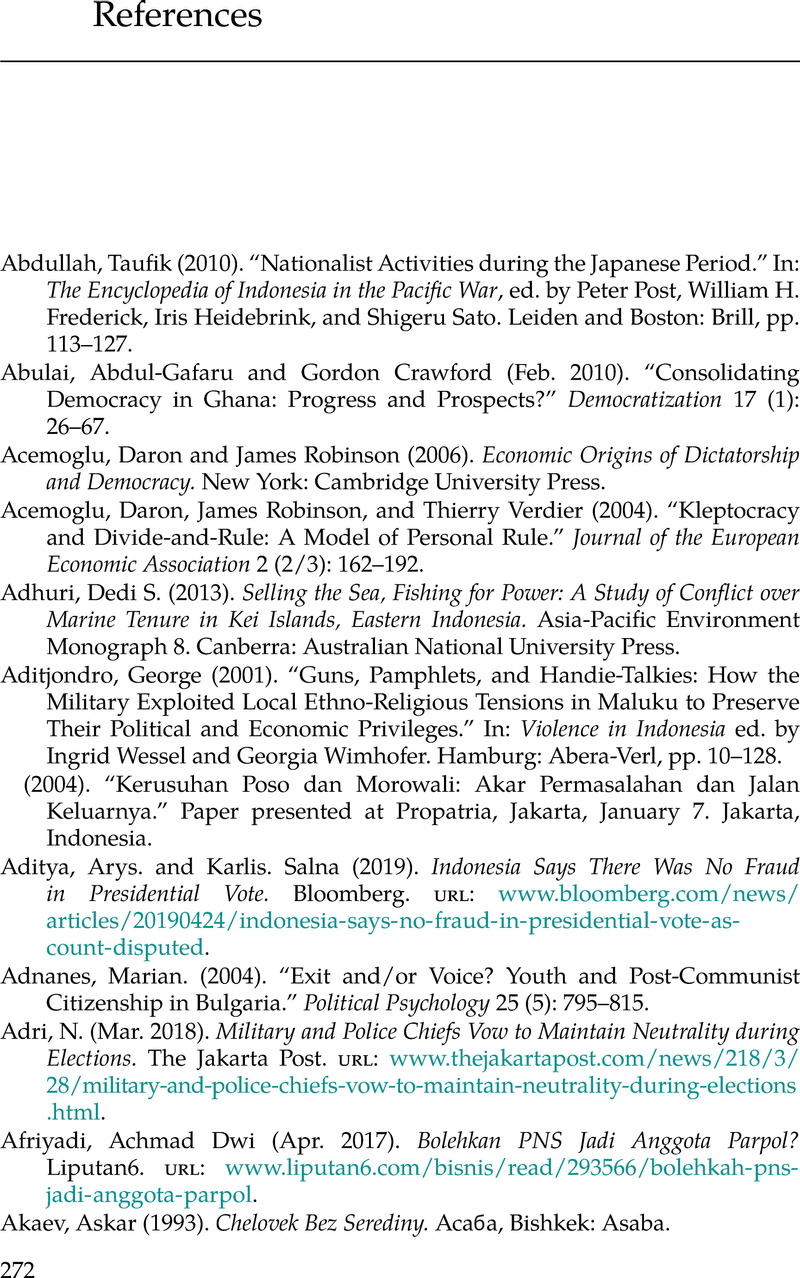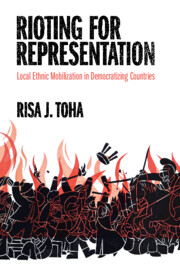Book contents
- Frontmatter
- Dedication
- Contents
- List of Figures
- List of Tables
- Acknowledgements
- 1 Introduction
- 2 Exclusion and Violence during Democratic Transitions
- 3 The Emergence of Identity-Based Cleavages in Indonesia
- 4 Ethnic Politics in Soeharto’s New Order Regime
- 5 Golkar’s Dominance and Ethnic Riots
- 6 Micro Dynamics of Exclusion and Riots
- 7 How Riots Dissipated
- 8 Conclusion
- Appendix A Data Collection Protocol
- Appendix B Additional Tables and Figures
- Glossary
- References
- Index
- References
References
Published online by Cambridge University Press: 28 October 2021
- Frontmatter
- Dedication
- Contents
- List of Figures
- List of Tables
- Acknowledgements
- 1 Introduction
- 2 Exclusion and Violence during Democratic Transitions
- 3 The Emergence of Identity-Based Cleavages in Indonesia
- 4 Ethnic Politics in Soeharto’s New Order Regime
- 5 Golkar’s Dominance and Ethnic Riots
- 6 Micro Dynamics of Exclusion and Riots
- 7 How Riots Dissipated
- 8 Conclusion
- Appendix A Data Collection Protocol
- Appendix B Additional Tables and Figures
- Glossary
- References
- Index
- References
Summary

- Type
- Chapter
- Information
- Rioting for RepresentationLocal Ethnic Mobilization in Democratizing Countries, pp. 273 - 304Publisher: Cambridge University PressPrint publication year: 2021



